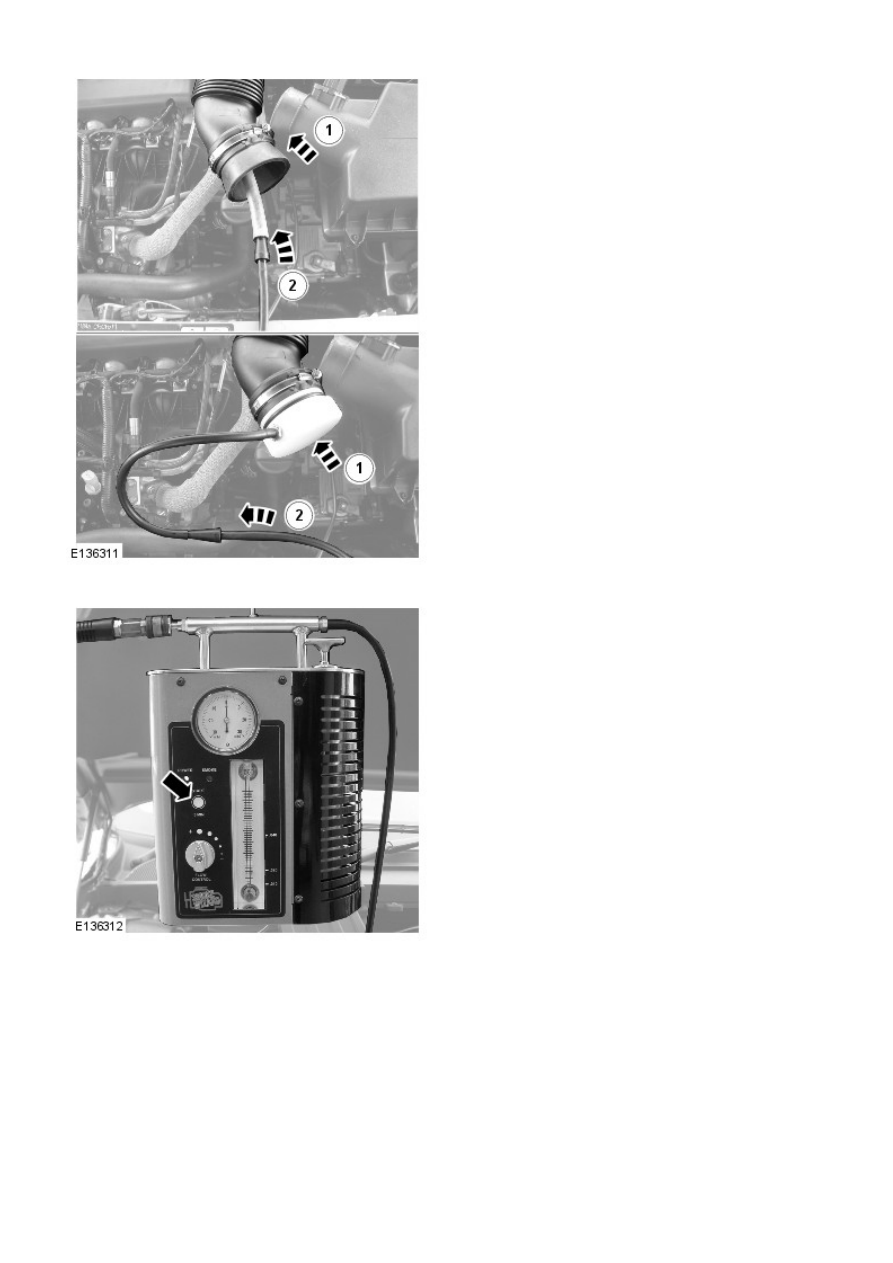Frelander 2. Manual - part 151

7. NOTE: Make sure the smoke test equipment adapter is a
good fit to the air cleaner outlet pipe. This must be an air
tight seal.
Connect the smoke test equipment supply hose to the air
cleaner outlet pipe.
1. Install the appropriate adapter to the air cleaner
outlet pipe.
2. Connect the smoke test equipment supply hose to
the adapter link hose.
8. NOTE: The flow control valve must be in the fully open
position.
• NOTE: Smoke is produced for 5 minutes. The smoke test
equipment will automatically switch off after this period of
time.
Switch the smoke test equipment on.
9. Remove the oil filler cap, and observe until a constant flow of
smoke is visible leaving the oil filler orifice. Install the oil filler
cap.
10. NOTE: The longer smoke is allowed to exit from a leak, the
more fluorescent dye will be deposited at a leak location.
Using the torch supplied in the kit set to white light, look for
escaping smoke. Alternatively, use the ultraviolet light to look
for fluorescent dye deposits at the source of a leak.